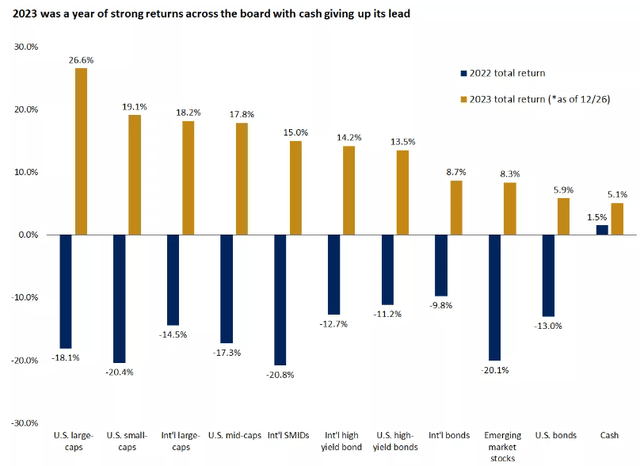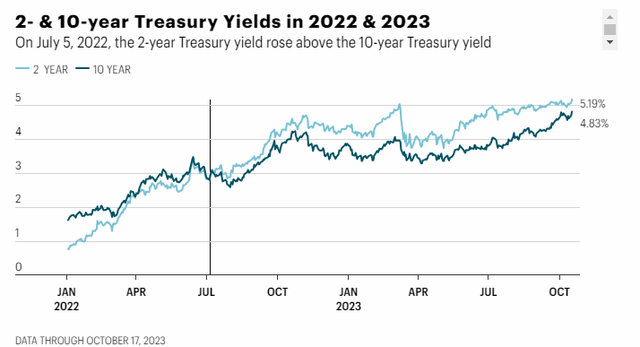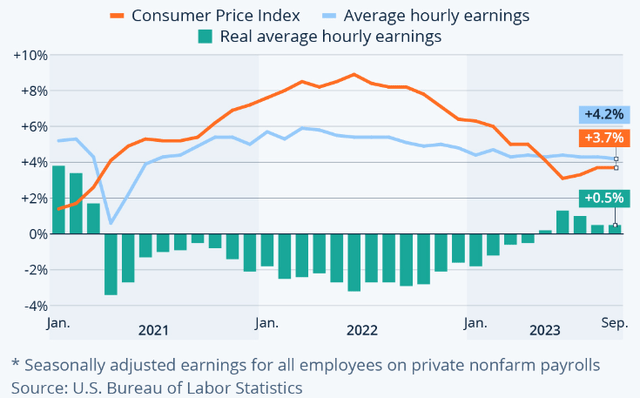
Approximately 12 months ago, the assertion was made that a bleak outlook and a widespread fixation on recession were obscuring the fact that the current expansion was robust, rooted firmly in a foundation constructed from the grassroots. It was also projected that the rates of change in incoming economic data would continue to show improvement across the board, with inflation rates falling faster than anticipated, ultimately leading to a pivot by the Fed in its policy stance during the initial quarter of 2023. Subsequently, the anticipation was for the birth of a new bull market, proven prophetic by significant gains witnessed across the board during the year.

Regrettably, one’s latest forecast dictates their standing, and therein lies the 2024 prediction. Amidst the lack of absolute clarity about the economic landscape and the absence of extremely low sentiment as a tailwind for forward market returns, confidence persists that the ongoing economic expansion will endure, and that the bull market born last year still has further room for advancement.
Futile Preoccupation with Recession
For the cohort relentless in forecasting a recession in 2023 and now pinning hopes on it materializing in 2024, the takeaway is to refrain from fixating on individual indicators to reach a conclusive stance. It is imperative to consider the entirety of the data within the current context, which encompasses a once-in-a-lifetime pandemic.
At the onset of 2023, several historically reliable indicators hinted at a highly probable recession. The most pivotal indicator was the inversion of the yield curve, persisting for 18 months, yet failing to usher in a recession. Other concerning indicators included the ongoing deterioration in the housing market, the prolonged contraction in the manufacturing sector, and the sharp decline in the Conference Board’s Leading Economic Index (LEI). Despite minimal improvement on these fronts, a recession remains absent.

Unprecedented swings in high-frequency economic data post-pandemic had disrupted previously reliable models for forecasting the business cycle. We spent much of the last year rectifying imbalances between supply and demand, such as the emphasis on services spending over goods, which depressed the manufacturing sector and heavily influenced the LEI. This is why most on Wall Street underestimated its strength. Main Street remains the linchpin for the continuation of the expansion in 2024 and is crucial for the ongoing bull market.
Prospects for Ongoing Expansion
For 18 months, a soft landing has been predicted on the basis that post-pandemic fiscal stimulus significantly favored the bottom 50% of households in terms of income and wealth, a unique occurrence. Additionally, the lowest-income workers experienced the highest percentage wage increase, allowing most consumers to counter the surge in costs for goods and services in 2023.

The reduction in savings and a decelerating wage growth trigger concerns about a recession. However, what is overlooked is the offsetting effect of real wage growth and the fall in inflation rates, reinstating the purchasing power of consumer incomes.


